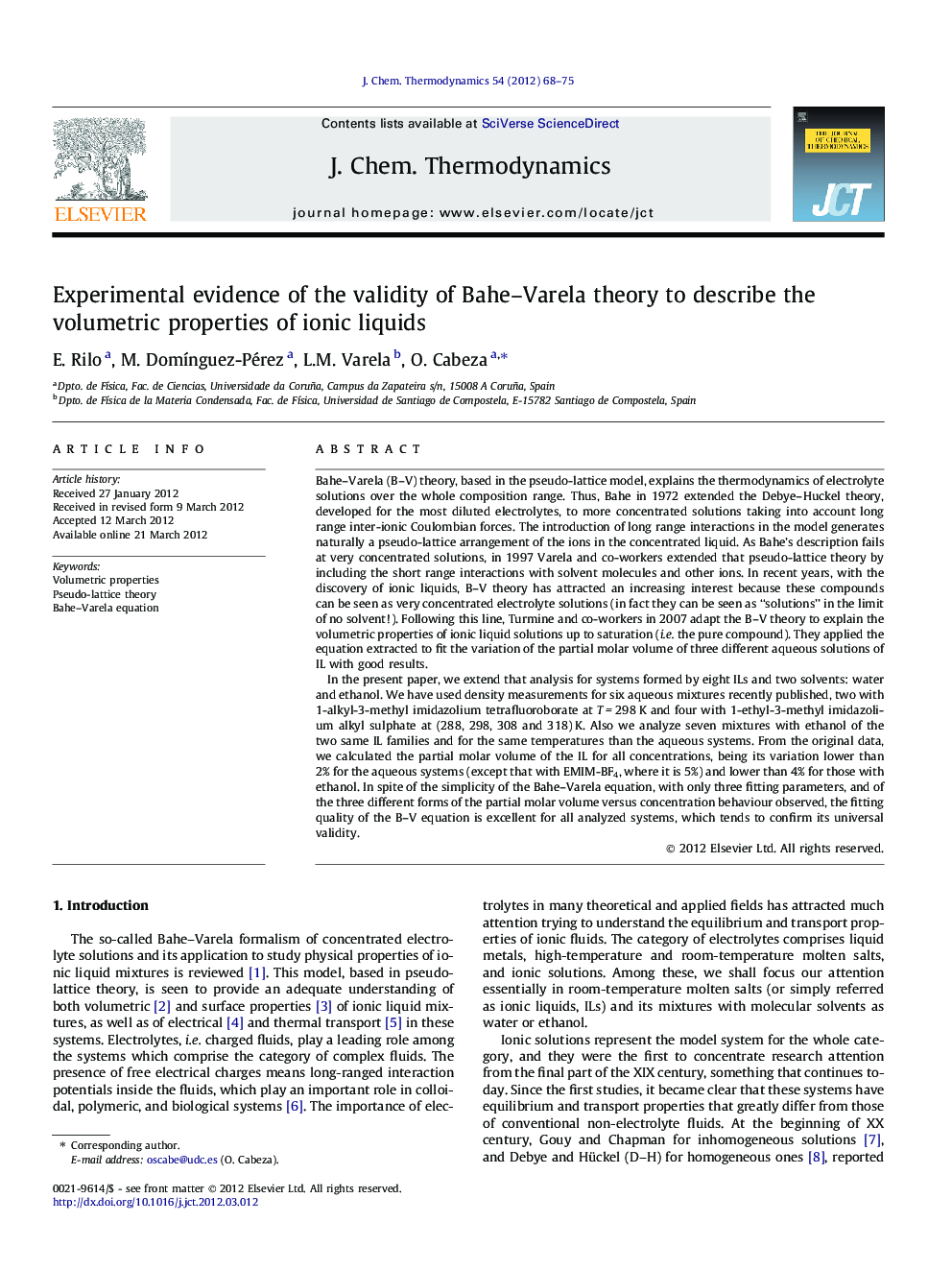| کد مقاله | کد نشریه | سال انتشار | مقاله انگلیسی | نسخه تمام متن |
|---|---|---|---|---|
| 215647 | 1426259 | 2012 | 8 صفحه PDF | دانلود رایگان |

Bahe–Varela (B–V) theory, based in the pseudo-lattice model, explains the thermodynamics of electrolyte solutions over the whole composition range. Thus, Bahe in 1972 extended the Debye–Huckel theory, developed for the most diluted electrolytes, to more concentrated solutions taking into account long range inter-ionic Coulombian forces. The introduction of long range interactions in the model generates naturally a pseudo-lattice arrangement of the ions in the concentrated liquid. As Bahe’s description fails at very concentrated solutions, in 1997 Varela and co-workers extended that pseudo-lattice theory by including the short range interactions with solvent molecules and other ions. In recent years, with the discovery of ionic liquids, B–V theory has attracted an increasing interest because these compounds can be seen as very concentrated electrolyte solutions (in fact they can be seen as “solutions” in the limit of no solvent!). Following this line, Turmine and co-workers in 2007 adapt the B–V theory to explain the volumetric properties of ionic liquid solutions up to saturation (i.e. the pure compound). They applied the equation extracted to fit the variation of the partial molar volume of three different aqueous solutions of IL with good results.In the present paper, we extend that analysis for systems formed by eight ILs and two solvents: water and ethanol. We have used density measurements for six aqueous mixtures recently published, two with 1-alkyl-3-methyl imidazolium tetrafluoroborate at T = 298 K and four with 1-ethyl-3-methyl imidazolium alkyl sulphate at (288, 298, 308 and 318) K. Also we analyze seven mixtures with ethanol of the two same IL families and for the same temperatures than the aqueous systems. From the original data, we calculated the partial molar volume of the IL for all concentrations, being its variation lower than 2% for the aqueous systems (except that with EMIM-BF4, where it is 5%) and lower than 4% for those with ethanol. In spite of the simplicity of the Bahe–Varela equation, with only three fitting parameters, and of the three different forms of the partial molar volume versus concentration behaviour observed, the fitting quality of the B–V equation is excellent for all analyzed systems, which tends to confirm its universal validity.
Figure optionsDownload as PowerPoint slideHighlights
► We present the theoretical equation given by the Bahe–Varela pseudolattice model.
► The adaptation of that model to predict partial molar volume in mixtures is reviewed.
► We fit the B–V equation to 13 ionic liquids (ILs) + 2 solvent binary systems at four temperatures.
► The ILs used were four tetrafluoroborate and four alkyl sulphate imidazoliums, and the solvents water and ethanol.
► The fit quality is excellent for all systems.
Journal: The Journal of Chemical Thermodynamics - Volume 54, November 2012, Pages 68–75